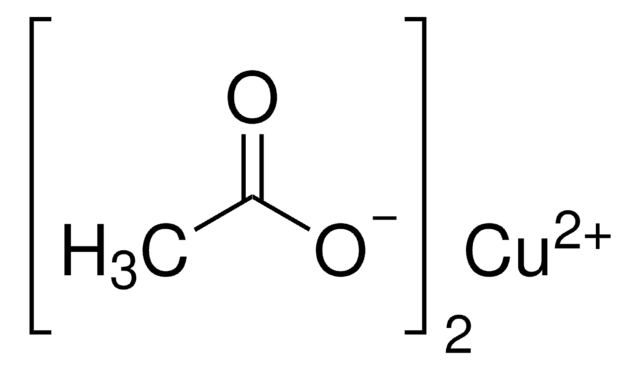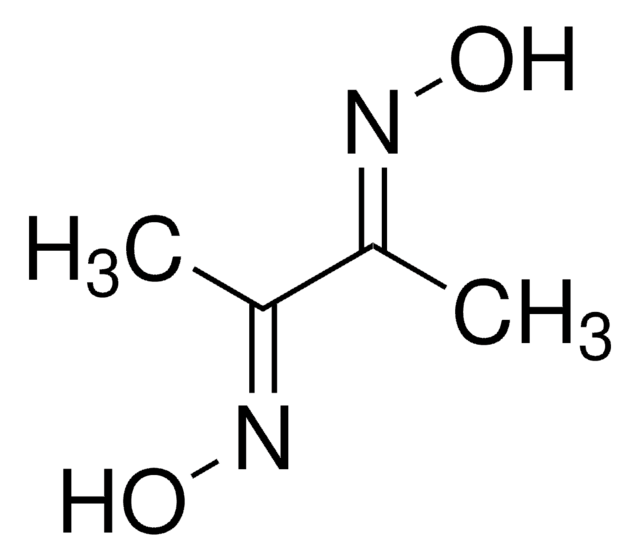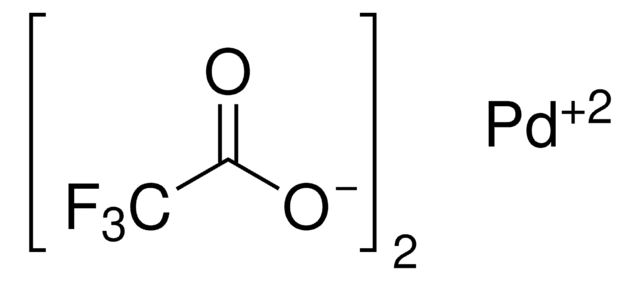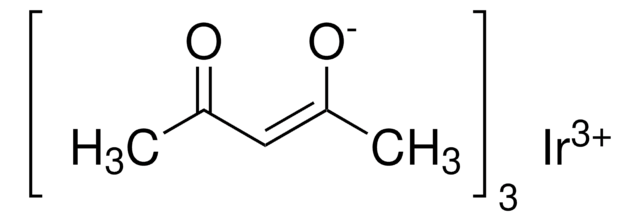209015
Palladium(II) acetylacetonate
99%
Synonym(s):
Palladium(II) 2,4-pentanedionate, Pd(acac)2
About This Item
Recommended Products
Quality Level
assay
99%
form
powder
reaction suitability
core: aluminum
reagent type: catalyst
mp
200-251 °C (dec.)
SMILES string
CC(=O)\C=C(\C)O[Pd]O\C(C)=C/C(C)=O
InChI
1S/2C5H8O2.Pd/c2*1-4(6)3-5(2)7;/h2*3,6H,1-2H3;/q;;+2/p-2/b2*4-3-;
InChI key
JKDRQYIYVJVOPF-FDGPNNRMSA-L
Looking for similar products? Visit Product Comparison Guide
General description
Application
- Typical high-temperature organic solution phase protocol for the preparation of monodisperse CuPd alloy nanoparticles (NPs).
- Preparation of [(NHC)Pd(acac)L] (where L=Me, NHC = N-heterocyclic carbene) complexes. These complexes efficiently catalyze the Heck reaction of activated aryl bromides.
- As catalyst in the decarboxylative cross-coupling of arylcarboxylic acids with aryl halides.
signalword
Warning
hcodes
Hazard Classifications
Eye Irrit. 2
Storage Class
11 - Combustible Solids
wgk_germany
WGK 2
flash_point_f
Not applicable
flash_point_c
Not applicable
ppe
dust mask type N95 (US), Eyeshields, Gloves
Certificates of Analysis (COA)
Search for Certificates of Analysis (COA) by entering the products Lot/Batch Number. Lot and Batch Numbers can be found on a product’s label following the words ‘Lot’ or ‘Batch’.
Already Own This Product?
Find documentation for the products that you have recently purchased in the Document Library.
Customers Also Viewed
Articles
The Heck reaction is the palladium catalyzed cross-coupling reaction between alkenes and aryl or vinyl halides (or triflates) to afford substituted alkenes.
High Purity Metalorganic Precursors for CPV Device Fabrication
The properties of many devices are limited by the intrinsic properties of the materials that compose them.
Our team of scientists has experience in all areas of research including Life Science, Material Science, Chemical Synthesis, Chromatography, Analytical and many others.
Contact Technical Service![[Pd(OAc)2]3 reagent grade, 98%](/deepweb/assets/sigmaaldrich/product/structures/508/249/99a0ef2c-b77c-4d73-8ed9-0cca05b6b41f/640/99a0ef2c-b77c-4d73-8ed9-0cca05b6b41f.png)
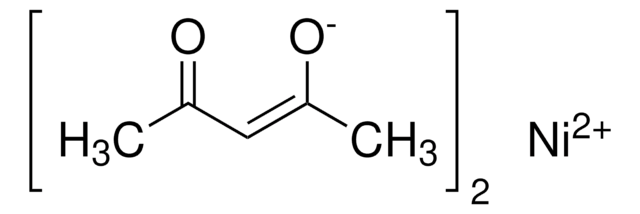
![[Pd(acac)2] Umicore, 99%](/deepweb/assets/sigmaaldrich/product/structures/145/685/c3d0f078-c0c6-4ce6-9c4a-b6a1b973b3a9/640/c3d0f078-c0c6-4ce6-9c4a-b6a1b973b3a9.png)
